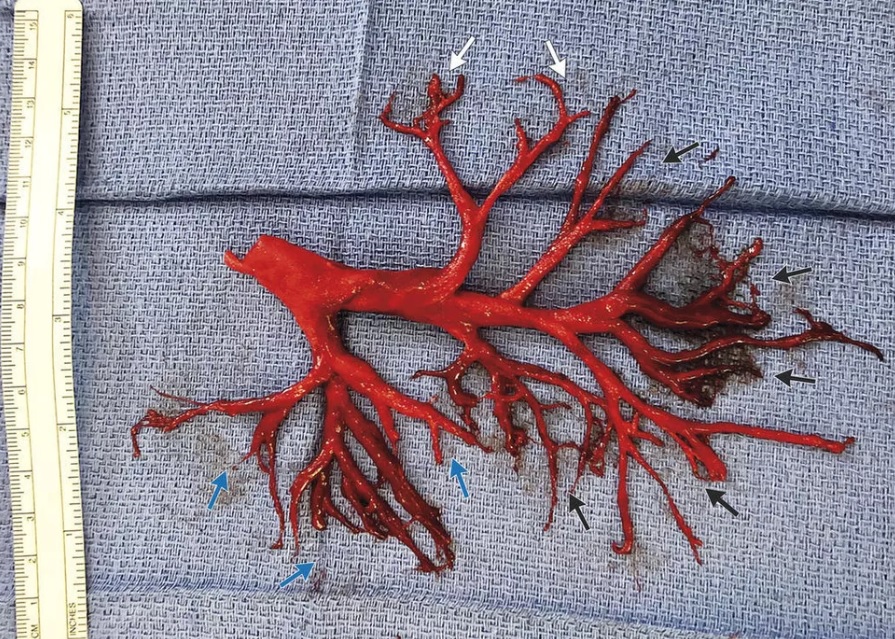
This picture is perhaps the most unusual picture we have come across. It looks very much like the left bronchial tree of the lung. This incident occurred in England, when a 36-year-old man, admitted to the critical intensive care unit, of heart failure, coughed up his massive blood clot. What took aback the doctors, were the structure of the blood clot. It first appeared as the bronchial tree which almost shook everyone at the hospital. The patient was put on ventricular assist device, a heart pump, but he showed signs of respiratory distress during the procedure. Suddenly, a massive cough threw out this strange shaped clot out of his mouth.
The reports were published by Doctors Gavitt Woodard and George Wieselthaler, University of California in the New England Journal of Medicine in November.
Here’s the report:
A 36-year-old man was admitted to the intensive care unit with an acute exacerbation of chronic heart failure. His medical history included heart failure with an ejection fraction of 20%, bioprosthetic aortic-valve replacement for bicuspid aortic stenosis, endovascular stenting of an aortic aneurysm, and placement of a permanent pacemaker for complete heart block. An Impella ventricular assist device was placed for management of acute heart failure, and a continuous heparin infusion was initiated for systemic anticoagulation. During the next week, the patient had episodes of small-volume hemoptysis, increasing respiratory distress, and increasing use of supplemental oxygen (up to 20 liters delivered through a high-flow nasal cannula). During an extreme bout of coughing, the patient spontaneously expectorated an intact cast of the right bronchial tree. The right bronchial tree consists of three segmental branches in the upper lobe (blue arrows), two segmental branches in the middle lobe (white arrows), and five segmental branches in the lower lobe (black arrows). The patient’s trachea was subsequently intubated, and flexible bronchoscopy revealed a small amount of blood in the basilar branches of the right lower lobe. The patient was extubated 2 days later and had no further episodes of hemoptysis. One week after extubation, he died from complications of heart failure (volume overload and poor cardiac output) despite placement of the ventricular assist device.






Leave a Reply